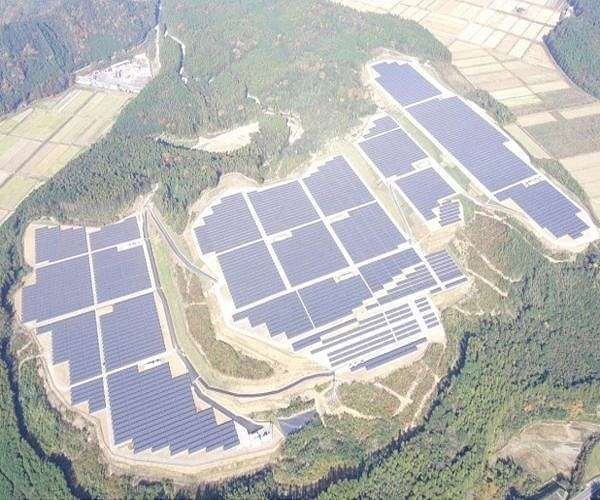Japan aims to make renewables its primary energy source by 2040
By Hiroshi HIYAMA
Tokyo (AFP) Dec 17, 2024
Japan is set to have renewables contribute as its main energy source by 2040 as part of its effort to become carbon neutral by mid-century, according to government plans disclosed on Tuesday.
After 13 years since the 2011 Fukushima disaster, Tokyo also reasserted its belief in a significant role for nuclear energy in helping the nation address increasing power demands from artificial intelligence and microchip production.
Campaigners assert that the world’s fourth-largest economy has the most polluted energy mix in the G7, with fossil fuels representing nearly 70 percent of its energy production last year.
The administration has already established a goal of achieving carbon neutrality by 2050, alongside a 46 percent reduction in emissions by 2030 from 2013 figures.
According to the new strategy, renewable sources like solar and wind are anticipated to comprise 40 to 50 percent of electricity production by 2040.
This represents a significant increase from last year’s rate of 23 percent and an earlier objective for 2030 of 38 percent.
Resource-deprived Japan “will strive to optimize the use of renewable energy as our principal power source,” as expressed in the draft Strategic Energy Plan.
Government advisors have been evaluating the recommendations put forth by the Agency for Natural Resources and Energy, which are expected to be presented to the cabinet for endorsement.
Japan aims to avoid dependence on a single energy source to guarantee “both a stable energy supply and decarbonization,” the draft indicated.
Geopolitical factors impacting energy supplies, from the conflict in Ukraine to unrest in the Middle East, have also contributed to the transition to renewables and nuclear, it noted.
– Imports –
Almost 70 percent of Japan’s energy requirements in 2023 were supplied by power plants fueled by coal, gas, and oil.
Nearly all of these resources must be imported, costing Japan approximately $500 million daily last year.
The government aims to reduce that figure to between 30 to 40 percent by 2040.
The previous target set for 2030 was 41 percent, or 42 percent when hydrogen and ammonia are included.
The new proposals anticipate an increase of 10 to 20 percent in overall electricity production by 2040, from 985 billion kilowatt-hours (kWh) in 2023.
“Securing decarbonized sources of electricity is directly linked to our nation’s economic progress,” stated Yoshifumi Murase, head of the national energy agency, in front of the government’s advisory panel on Tuesday.
– Nuclear –
Unlike the former plan proposed three years ago, the new draft has removed references to minimizing Japan’s reliance on nuclear “as much as possible”—a goal established following the 2011 Fukushima disaster.
Japan ceased operation of nuclear power plants nationwide after the tsunami-driven Fukushima meltdown, the worst nuclear disaster of this century.
However, it has gradually restarted several plants, despite public opposition in certain areas, reflecting a revival of nuclear energy in other nations as well.
Under the 2040 goals, nuclear is expected to fulfill roughly 20 percent of Japan’s energy needs, maintaining the same target as the current 2030 projection.
Nonetheless, this is more than double the 8.5 percent share of total power generation that nuclear contributed in 2023.
– Too little, too late –
Hirotaka Koike from Greenpeace expressed approval for the new plan but remarked that it is “too little, too late,” calling for “much greater ambition” regarding renewables.
Japan “has pledged to ‘fully or predominantly decarbonized energy systems by 2035,’ and evidently, their current plan doesn’t fulfill that,” Koike stated.
Hanna Hakko from the climate think tank E3G also described Japan’s ambitions as “quite disappointing.”
“The energy mix proposed by the government does not align with Japan’s international commitments to combat climate change and expedite the transition to clean energy,” Hakko told AFP.
“Many scenarios developed by energy experts show that if the government were to implement supportive policies, renewables could expand to comprise between 60 to 80 percent of Japan’s electricity generation mix in the latter half of the 2030s,” she added.
Related Links
All About Solar Power at SolarDaily.com

